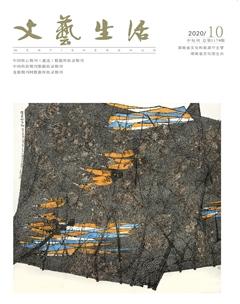Research on the development and historical inheritance of ink lace
顾雅兰
摘要:Imink lace is one of the representatives of China's intangible cultural heritage, shandong lace is the main famous yantai lace, imink hammer lace, and zibo shuttle lace and so on. Shandong lace was introduced into China's coastal areas by western missionaries, and then combined with traditional Chinese handicraft embroidery and weaving techniques. Lace is a handicraft made by hand, mainly used for tablecloths, sheets and coasters. The main purpose of this study is to understand the unique artistic charm of lace handicraft produced by the localized influence of exotic lace handicraft in China.
關键词::ink lace;origin;Features;Development;Basic artistic features
中图分类号:J215
文献标识码:A
DOI:10.12228/j.issn.1005-5312.2020.29.029
文章编号:1005-5312(2020)29-0041-01
一、Features of ink lace
A thorough study on the origin of Imink lace "Records of Jimo City" was introduced into China by western missionaries in the Guangxu Period, and the evolution of its localization according to the inter- view with Wang Jun, the representative of the inheri- tance of imink lace, was slowly evolved from the com- bination of the traditional Chinese knitting tech- niques "small lock" and Lu Embroidery. At the begin- ning, imink lace was exported as a foreign trade prod- uct, so the flower pattern is mainly themed with flow- ers.
二、Origin of ink lace
The development of imink lace on intangible cul- tural heritage has a close relationship with the First Opium War. After the First Opium War, China signed the Treaty of Tianjin, which stipulated that China should open a treaty port, which was selected in Yantai due to its geographical location. The denominations from the West mainly include Christianity and Catholicism for preaching, and the weaving technology of lace was introduced into China. Lace, as a new industry, took root and grew rapidly in Shandong, and led local women to set up a technical school specially to learn Euro- pean yarn drawing skills, and combined with local wom- en's traditional weaving and embroidery skills, worked out exquisite lace crafts with local charm
三、Development of ink lace
virtue and successively to yantai areas such as founded by the British rende foreign firm to study, learn skills craftsmen studious and during their stud- ies. Through repeated experiments, it combines the knitting techniques of two different regions, that is, the club lace with European characteristics and the small lock lace in Qianlong period, to create folk handicrafts with local culture.
After the founding of new China, public-private partnerships, many lace factory merger, cieme lace factory, founded in 1956, Qingdao cieme lace factory after rapid development into the boom, 1966 species has reached dozens of production, its products have formed the tablecloth bedspread clothing, and other series, exquisite handicrafts are sold to the need. At the same time, the booming development of Jimo lace has promoted the household income of local women in Jimo local areas, including Li Village hot spring, Aoshanwei and other places.
四、Basic artistic features of ink lace
Imink lace is also known as the drawling treasure, drawling lace is according to the warp and weft of the cloth. According to the requirements of the pattern, draw out the warp yarn in the lace, embroider differ- ent patterns, ink-lace is a kind of Lu Embroidery, the main stitch has more than 20 kinds of techniques such as lock weave, more than 80 kinds of stitch and one. Cieme lace materials mainly is bleached cotton is giv- en priority to, through the cotton itself sense of texture and texture, and through different stitch such as needle net of different density effect, it is the density of different produce the contrast with the ac- tual condition, according to the perspective of myopia is empty,let give cieme lace flat knitting space stereo feeling, like the window of the family scene.It shows the beauty of artistic harmony.

